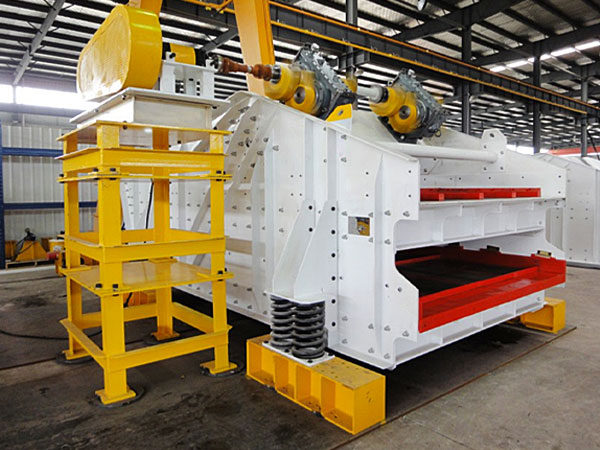How to choose the mesh size of a linear vibrating screen
Choosing the correct mesh size for a linear vibrating screen is crucial for achieving the desired product separation and throughput. The primary factors to consider are the characteristics of the material being screened, the required separation size, and the vibrating screen’s performance capabilities.
How to choose the mesh size of a linear vibrating screen

Material Characteristics
The properties of the material you are screening have the biggest impact on mesh size selection.
Particle Size and Distribution: The most important factor. The mesh size must correspond to the particle size you want to separate. Use a sieve analysis to determine the particle size distribution of your feed material. The mesh size should be slightly larger than the particle size you wish to retain (the “oversize” material) and slightly smaller than the particles you want to pass through (the “undersize” material).
Moisture Content: If the material is wet or sticky, it can blind or clog the screen openings. For high-moisture materials, a coarser mesh or one with a special anti-blinding design (like a polyurethane screen) may be necessary to prevent blockages, even if a finer mesh would otherwise be ideal for the desired separation.
Particle Shape and Density: Materials with different shapes, like flat or elongated particles, can be harder to screen and may require a larger mesh opening to prevent them from getting stuck. Denser materials may require a different vibration amplitude or frequency to ensure proper stratification on the screen deck, which in turn affects the optimal mesh size.

Desired Separation and Throughput
Your project’s goals directly influence the mesh size.
Screening Accuracy: The desired level of precision in the final product is key. If you need a very precise separation, you may need a finer mesh and a slower feed rate. This increases efficiency but can decrease overall capacity.
Required Capacity: The amount of material you need to process per hour (throughput) impacts the screen size and, indirectly, the mesh. A larger screen deck with a larger mesh opening can handle a higher volume of material but may sacrifice some separation accuracy.
Number of Separations: If you need to separate the material into multiple sizes, a multi-deck screen with a different mesh size on each deck is the best choice. For instance, a two-deck screen might have a coarse mesh on the top to remove large chunks and a finer mesh on the bottom to separate the product from unwanted fines.
Mesh Material and Construction
The physical properties of the mesh itself must be chosen to withstand the application.
Mesh Type: Common types include woven wire mesh, polyurethane screens, and perforated plates. Woven wire mesh is versatile and has a large open area, but it can wear out faster with abrasive materials. Polyurethane screens are highly wear-resistant and are a good choice for abrasive or sticky materials, but they typically have a smaller open area, which can reduce throughput.
Wire Diameter: For woven wire mesh, the wire diameter affects the open area (the ratio of open space to the total screen area). A finer wire diameter for a given mesh size results in a larger open area, allowing more material to pass through and increasing capacity. However, a thinner wire is less durable. You must balance the need for capacity with the need for durability.
However, selecting the appropriate mesh size is not always straightforward. It depends on several factors, including the characteristics of the material (particle size, moisture content, bulk density), the desired output specifications,and the production capacity requirements. Using an unsuitable mesh size can lead to problems such as clogging, low screening efficiency, or poor product quality.



